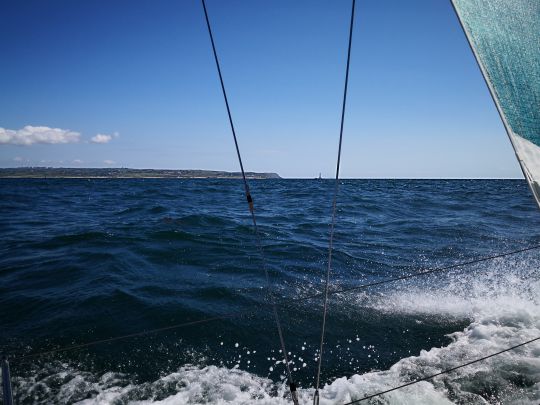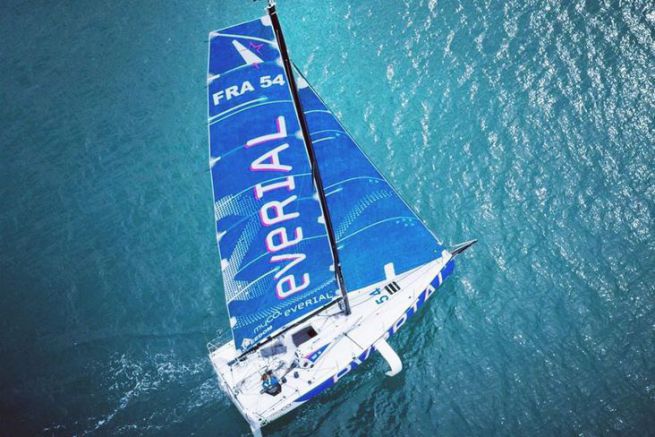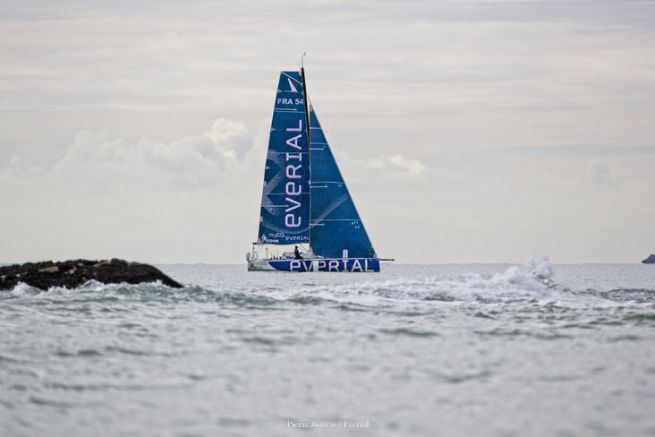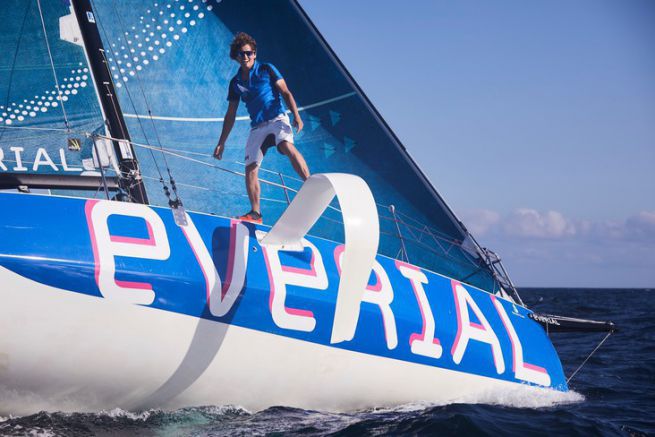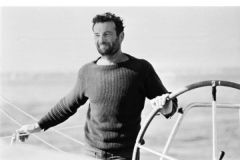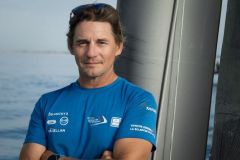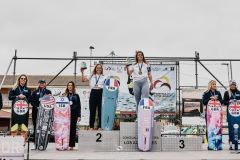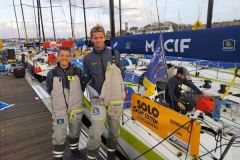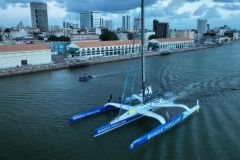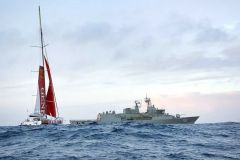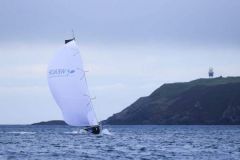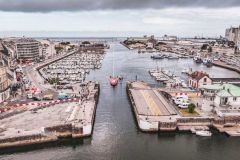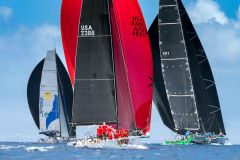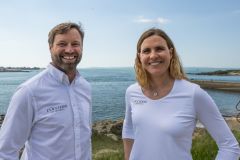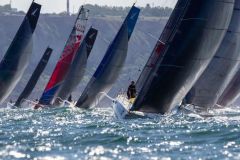The migration of the Figaro3
After the Solitaire du Figaro, the traditional transhumance of the race monotypes to their home ports and training centres will take place. In general, this after-race delivery is carried out by the préparateurs, available runners and sometimes their appointed skippers if they are not exhausted.
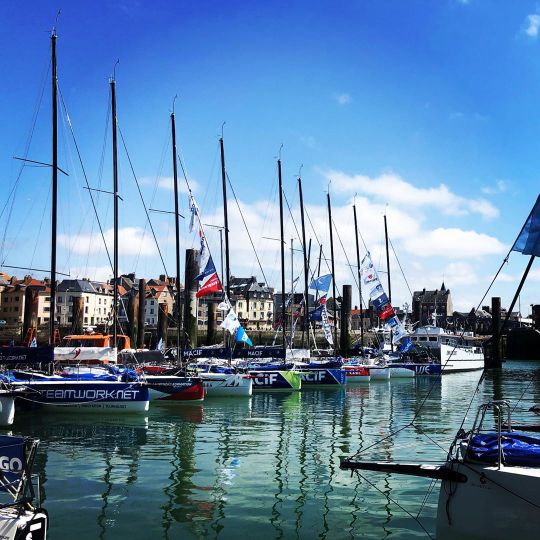
Early in the morning, we drove from Brittany to Dieppe, the city where the Solitaire du Figaro - Urgo 2019 ended. On board, Stéphane brings back Armel Le Cléac'h's boat, Yannick will take Gildas Mahé's boat and I will take Clarisse Crémer's boat. I am invited by Stan Thuret, filmmaker and ocean runner, who is taking over from Clarisse Crémer on the Firago 3 Everial. He will run the end of the season under Everial's colours while Clarisse will devote himself to taking charge of the Imoca Banque Populaire for the 2020 Vendée Globe.
A technical conveyor of 400 MN, for a first-hand experience
Like many others, we have to take the boat back to Lorient La Base for a general check-up before training resumes to prepare for the Tour of Brittany. For Stan, this delivery is the discovery of his new racing boat. This rather technical 400-minute navigation takes us to sail in areas with very strong currents that are typical of Solitaire events.
Due to the tide, many of us left Dieppe Harbour around 5 p. m. And it is about fifteen monotypes that take the same tide towards South Brittany.
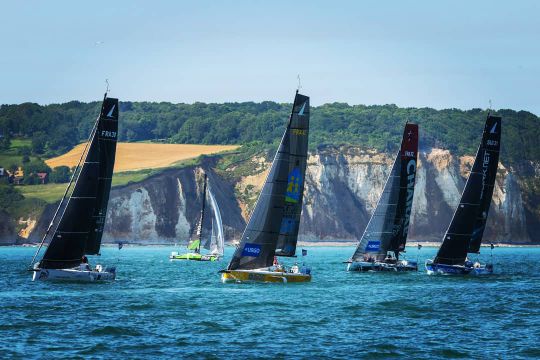
The summer weather is ideal, the sun shines on the limestone cliffs typical of Upper Normandy. The westerly wind is blowing at 12/15 knots, right in the middle of our trajectory to reach the tip of the Cotentin.
Put 15 racing boats on the same water, going to the same place and a delivery immediately turns into a real regatta.
Like in a race, or almost
On board Everial, we are looking for performance although there is no other challenge than to discover the boat, make marks, test the equipment, evaluate its speed in relation to others, test the adjustments of times, sail, lodge and work on the manoeuvres.
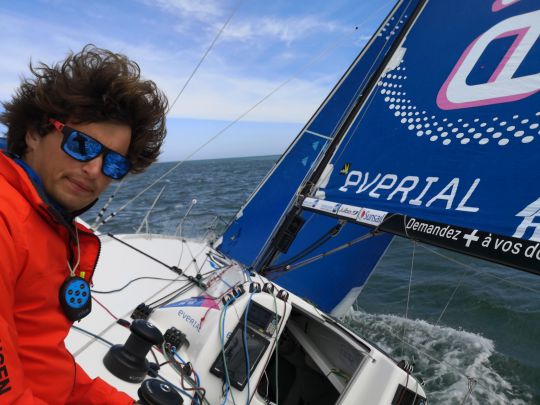
To reach the tip of the Cotentin, no edge is really favourable and we are all sailing upwind. The sleeve has its typical little chop that shakes this boat and its crew a little bit.
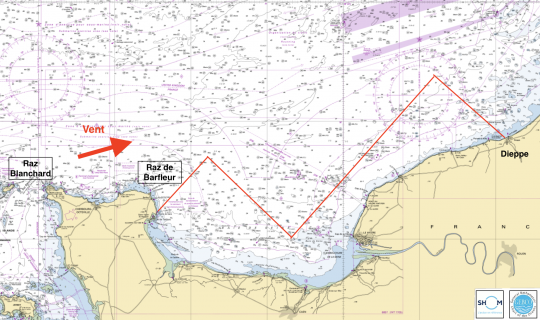
The Figaro 3 does not offer a very sharp upwind angle. The drift is quite significant, in the order of 5 to 7 degrees. Looking for a fast VMG, we sail a little over 6.5 knots and from one edge to the other we find an angle a little over 90°. To optimize the speed, and improve the anti-drift effect, we try many sail and foil adjustments.

Night falls late in this season (late June). Around 11 p.m., under a still slightly bright sky, we make our first freeze-dried meal, a dinner like in a race. The watches are getting organized, but sleep is not coming, we spend this first night in contact with the fleet with some "hot" crossings. It is a beautiful starry navigation in the middle of the English Channel, the Milky Way overlooks us and the shooting stars run through the sky.
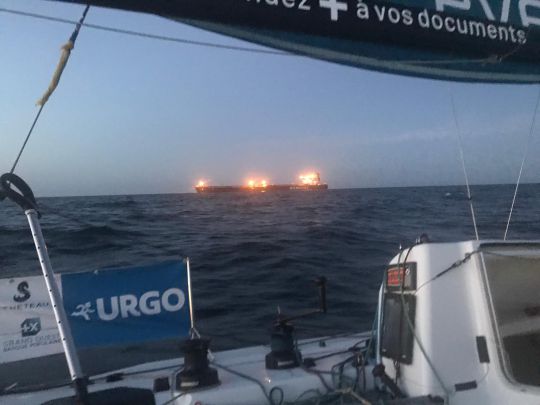
The bypass of the Raz de Barfleur
In the early morning, the wind is still coming from the West at 15 knots, the sunrise lets us see the earth on the horizon. It is at the end of the morning that we arrive at the NE point of the Cotentin. The Barfleur Raz is famous for its strong currents, raising a difficult and sometimes dangerous sea. As far as we are concerned, the current is largely favourable. We estimate it to be between 2 and 3 knots and it opposes the westerly wind, raising a sea that has nothing to do with the weather.
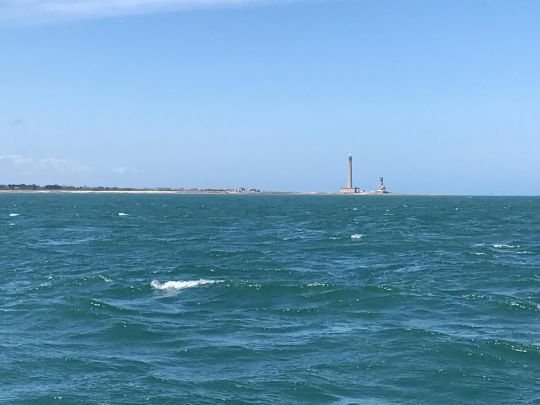
On our Figaro Everial, we are approaching a "bar" where static waves of a small metre break while the sea is flat around. Vests and harnesses are used to cross this "bar".
The current is favourable to us, but that's no reason to neglect road optimization, otherwise the little comrades will pass in front. It is necessary to find the right compromise between tightening the gap to shorten the route and staying in the strong current vein to gain several knots.
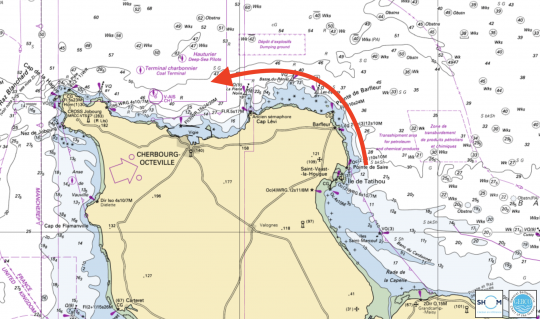
In order to stay in the bed of the strong current, we set our course near the 20 m probe. We cross traps submerged by the power of the flow.
Less than a mile from the coast, it passes very quickly before our eyes. We roll up Barfleur's raz, and we are like catapults in Cherbourg Bay. The Blanchard Raz is now facing us, in extremis we will pass just before the end of the favourable current. Those who are a little behind will suffer from the reversal.
